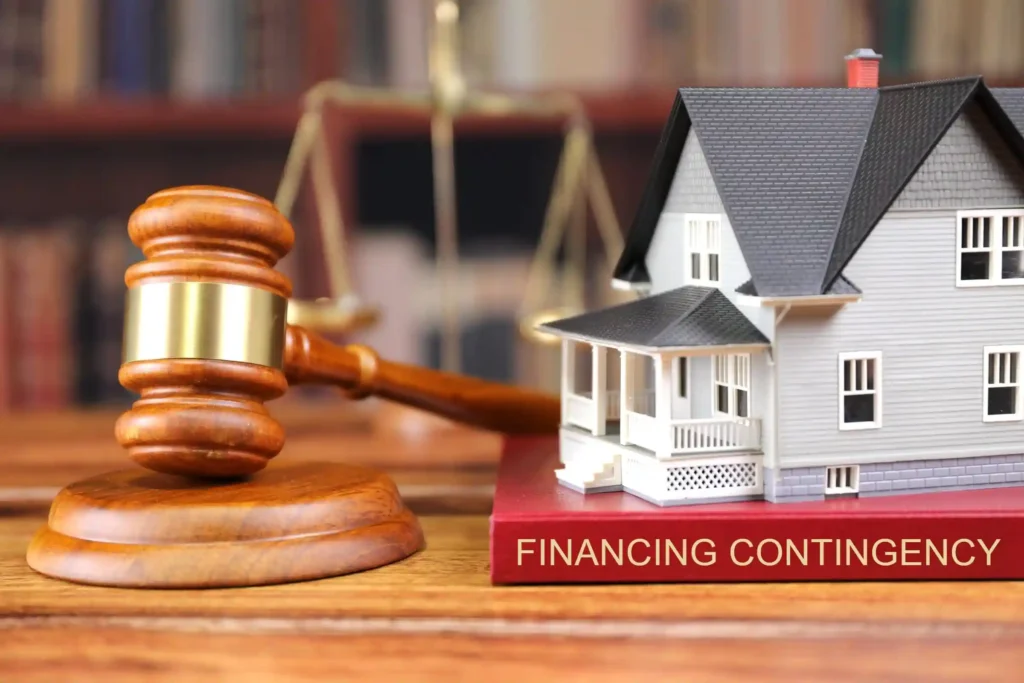
When purchasing a home, one of the most critical components within the purchase agreement is the financing contingency. This clause gives the buyer a window of protection by allowing time to secure a mortgage or financing without risking their earnest money. For many buyers, it’s a safety net, ensuring they don’t get locked into a contract without the means to pay. At its core, the financing contingency clause protects the buyer from financial risk when a contingent loan is involved in the transaction.
What Is a Financing Contingency and Why It Exists
A financing contingency, also referred to as a loan contingency or mortgage contingency, is a legal clause that allows a buyer to cancel the purchase contract if they are unable to obtain financing within a specified time frame. It’s a form of financial contingency that links the success of the purchase to the buyer’s ability to secure a mortgage. Without this clause, if the loan falls through, the buyer may lose their earnest money deposit or face legal consequences.
How Financing Contingencies Work in Practice
Once an offer is accepted, the buyer typically has a predetermined period—often 21 to 30 days—to get final mortgage approval. During this period, lenders conduct verifications, appraisals, and underwriting. If the mortgage contingency date passes without loan approval, the buyer must either move forward without financing in place, request an extension, or walk away using the clause. The mortgage contingency date vs closing date are separate benchmarks, with the contingency deadline coming well before the actual settlement.
Financing Contingency Example for Clarity
Consider a buyer who submits an offer with a financing contingency that allows 25 days for securing a mortgage. The buyer applies promptly but gets denied due to unexpected credit issues. Because the contingency is still active, the buyer can withdraw from the contract and reclaim their earnest money, avoiding penalty. This contingency finance meaning provides peace of mind to those who may not have guaranteed loan approval at the time of making an offer.
The Dangers of Waiving Financing Contingency
Some buyers, especially in competitive markets, consider waiving the financing contingency to make their offer more appealing to sellers. This is known as a waiver of financing contingency. While it might give an edge in bidding wars, it comes with significant risk. Should financing fall through, the buyer might be legally obligated to purchase the property or forfeit their deposit. For buyers relying on a contingent loan, this decision could lead to financial strain or legal disputes.
What Happens If Financing Falls Through?
If financing collapses and no loan contingency is in place, the outcome can be devastating. Not only could the buyer lose their earnest money, but they may also face litigation for breach of contract. Many first-time homebuyers do not realize the implications of not including a financial contingency clause or mortgage contingency until it’s too late. A no financing contingency offer is only advisable when the buyer has secured funding or is paying in full.
Why Contingency Clauses Should Be Taken Seriously
The loan contingency meaning goes beyond just loan approval. It represents a legally binding escape clause that safeguards a buyer’s investment in uncertain situations. Whether you’re using a traditional lender or pursuing alternative contingent financing, this clause gives time for due diligence without emotional or financial pressure. Without it, even minor changes in interest rates or credit scores could derail the entire purchase.
Understanding the Contingency Period Timeline
The standard real estate contingency period can vary, but it usually ranges from two to four weeks. This window allows the buyer to not only obtain financing but also complete inspections, appraisals, and other essential checks. Timing is everything. If the funding contingency is not satisfied or extended before the deadline, the buyer may be forced to make a decision with lasting consequences.
The Meaning Behind Contingency Loans
So what is a contingency loan? It’s any financing that is conditional upon meeting certain criteria before it becomes binding—such as income verification, satisfactory appraisal, or creditworthiness. The contingent loan meaning often overlaps with the mortgage approval process. It’s called “contingent” because it is not guaranteed until all lender conditions are satisfied.
Sample Financing Contingency Clause
A basic sample financing contingency clause might read: “This agreement is contingent upon Buyer obtaining a 30-year fixed-rate mortgage at an interest rate not to exceed X%. If Buyer fails to obtain financing by [date], this contract shall become null and void, and earnest money shall be returned.” This language offers clear protection and avoids disputes in case of loan failure.
Should You Ever Waive Your Financing Contingency?
Buyers with strong financial positions and pre-approval may be tempted to remove this safeguard. However, even pre-approved loans are not guaranteed. Until final underwriting is complete, loan denial remains a possibility. The waiving contingency decision should only be made when funds are certain or in cash deals where no lender involvement exists. Otherwise, the risk outweighs the benefit.
